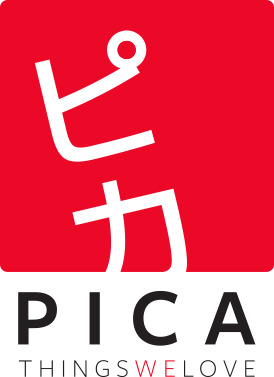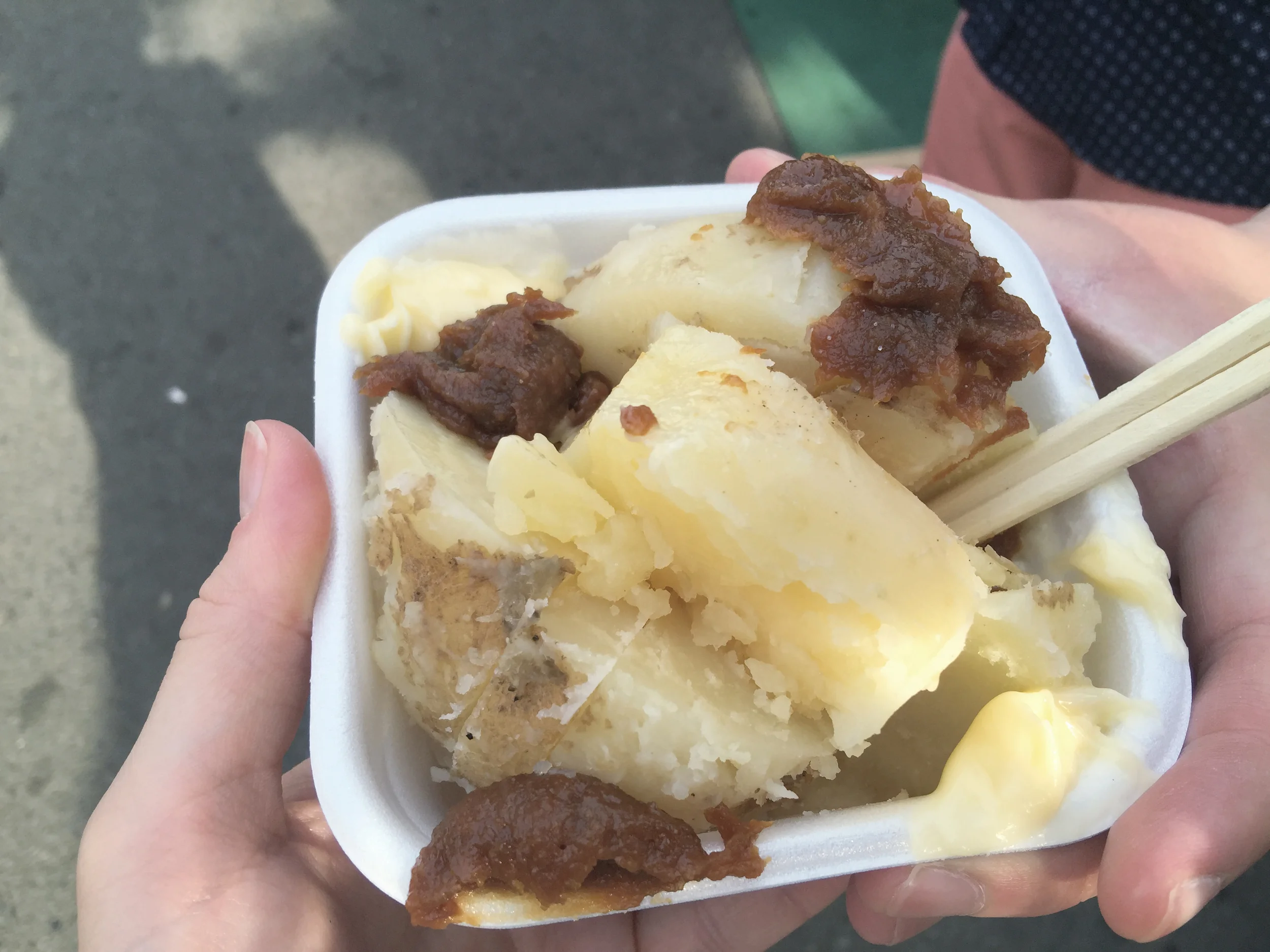Summer is in full swing now. So let’s talk about the Japanese Natsu Matsuri (夏祭り, summer festival) culture. Or more importantly what to expect when attending one.
The matsuri (祭, festival) events bring together communities, residents and of course, the curious gaijin (外人, foreigners). Most are based on culture, some on religion. The best ones just celebrate the awesomeness of life itself. Here are our two favourites:
Mikoshi 神輿 (portable shrine)
Shinto-based matsuri are festivals dedicated to a specific neighbourhood Shinto shrine. Some are celebrated once a year, and some every two years. This is where you’ll get to see a large number of genki (元気, lively, spirited) volunteers, dressed in traditional mikoshi bearer clothes, carrying the portable shrine, while rhythmically lifting it up and down to amuse the enshrined deity.
Mikoshi at Sanja Matsuri '15
The parade lasts for a day or two, with the portable shrine being carried along the streets of its neighbourhood. There is music and “wasshoi” (わっしょい, heave ho!) chanting. Lot’s of chanting. Bearing the mikoshi is no easy task. “Wasshoi” encourages the group to keep up the rhythm and the pace, providing the necessary energy to keep up with the important task. The highlight of the parade is the return of the mikoshi to its shrine. The participants go wild, with genkiness to the max.
Crowd at Sanja Matsuri '15
We had the pleasure of attending the Sanja Matsuri (三社祭, literally "Three Shrine Festival") this past May on our latest Tokyo visit. It is one of the biggest mikoshi matsuri in Tokyo, taking place in the Asakusa neighbourhood that happens only once every two years. The turnout was great. Lots of food, sunlight, fun, excitement and more food. And yes, this blog was a great excuse to share our trip festival photos with the world.
Fireworks 花火
Hanabi (花火, fireworks) is by far one of my favourite matsuri. If you think you’ve seen a great firework display before, Japanese hanabi will top it! These people are true artisans in the craft of explosive coloured lights. I’d say it is not even as much as a celebration, but more of a competition. Think bigger, brighter, and more colourful than you’ve ever seen before. They are also longer, with Tokyo’s Sumida river fireworks being displayed practically nonstop for over 2 hours. Your visit to Japan in the height of the summer heat will definitely be worth it, if you catch one of those.
There are many more types of festivals as well. Some feature dancing, music, lanterns. Some are meant to celebrate a specific cultural event, such as Tanabata. (Read more on Tanabata here.) I won’t go into detail for all of them, but I will point out the three things most of them all have in common.
One: Yukata 浴衣
Yukata, (浴衣) is a Japanese light summer kimono. It comes in many colour variations, and similarly to kimono, is tied with a matching colourful obi (帯, sash). Unlike kimono, with yukata you have an option to tie the obi yourself or get a ready-made easy to put on clip-on. If you visit any of the Japanese summer matsuri, you’ll see almost everyone wearing one. It is a humble cultural experience that survived the time of change towards modernization. I highly recommend wearing one, as it adds to the experience of the summer matsuri celebration, allowing you to fully take part in all the festivities of the event.
Two: Kingyo Sukui, The Game of Fish
Kingyo Sukui (金魚すくい, goldfish scooping) is a game of patience, perseverance and downright luck. The highlight - if you win, you get to take the living creature home. That is if you win. Catching the fish in the pool is no easy task. First, you pay for the flat net that is made of paper. Then you must use this net to try to scoop up the fish. If you leave it in the water for too long, the paper will dissolve. If you apply too much force, the paper will rip. I won’t even go on to mention the fundamental nature of the fish not staying still in one place. I’d say one thing though: attempting to catch one is definitely the best part. Did I mention you get to keep it!
Three: Matsuri Food!
For me, food is by far the highlight of any matsuri. Japanese food is known to be healthy and light. But when it comes to Japanese festival food, it is quite the opposite. Most of the real estate is taken up by pop up food stalls filled with grilled, deep fried, baked, and sweetened goodness. The menu ranges from the oh-so-famous yakisoba (焼きそば, grilled soba noodles), okonomiyaki (お好み焼き, grilled savoury pancake containing a mix of ingredients), takoyaki (たこ焼き, wheat flour-based batter grilled ball filled with diced octopus), taiyaki (鯛焼き, batter fried and filled with red-bean paste or custard fish shaped goodness), ikayaki (いか焼き, grilled squid), kushiyaki (串焼き, grilled skewered meat goodness) to my favourite jagabata (じゃがバター, baked potato served with a large helping of butter and miso paste). For desert there the skewered choco banana (チョコバナナ) - chocolate dipped banana, kakigoori (かき氷) - shaved ice with a flavour syrup of your choice, and other candy treats. I am sure I missed some. The spread is just too great to take in in one seating.
じゃがバター (jagabata)
かき氷 (kakigouri) - Note to self, leave the topping to the pros. Went a bit crazy on the syrup, and ended up with sweetness of a lifetime.
July and August are filled with matsuri. If you are planning on visiting Japan, make sure to book your time around one of the many events. If, however, you happen to live in Toronto or are staying in town for the next couple of days, make sure to come by the 3rd Annual Toronto Japanese Summer Festival that is held on Sunday, July 26th at the Yonge-Dundas Square. (For more info visit the festival’s facebook page.)








![IMG_2985[JS].jpg](https://images.squarespace-cdn.com/content/v1/556b80a8e4b0c3683a9ceacb/1437617980660-5GYB8FVER6WFDVLTYUHZ/IMG_2985%5BJS%5D.jpg)
![IMG_2988[JS].jpg](https://images.squarespace-cdn.com/content/v1/556b80a8e4b0c3683a9ceacb/1437617980994-01P0OJIE160Y5M2YMX9S/IMG_2988%5BJS%5D.jpg)
![IMG_6504[JS].jpg](https://images.squarespace-cdn.com/content/v1/556b80a8e4b0c3683a9ceacb/1437617992365-0ZVNTIHDYMYPF28N99MW/IMG_6504%5BJS%5D.jpg)
![IMG_6496[JS].jpg](https://images.squarespace-cdn.com/content/v1/556b80a8e4b0c3683a9ceacb/1437618001961-EFJFJP55THU15MXHM659/IMG_6496%5BJS%5D.jpg)

